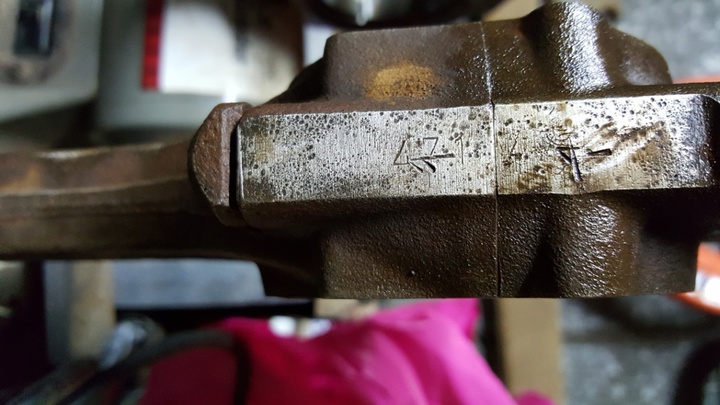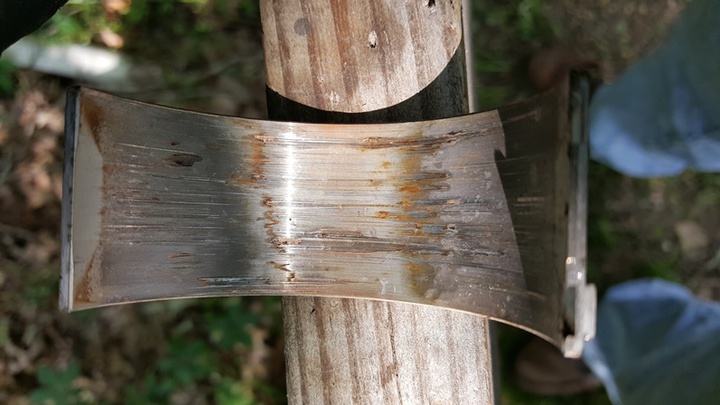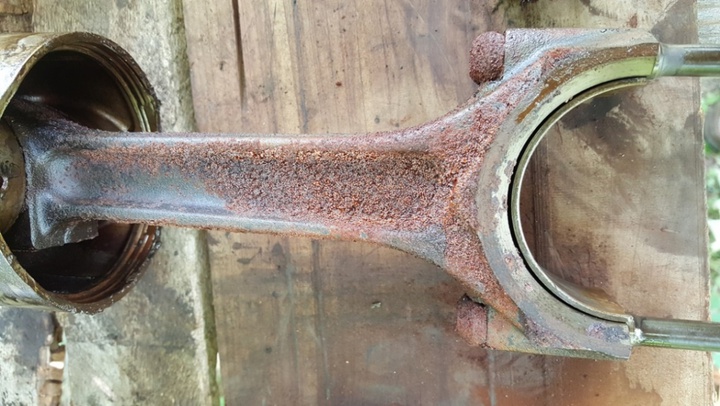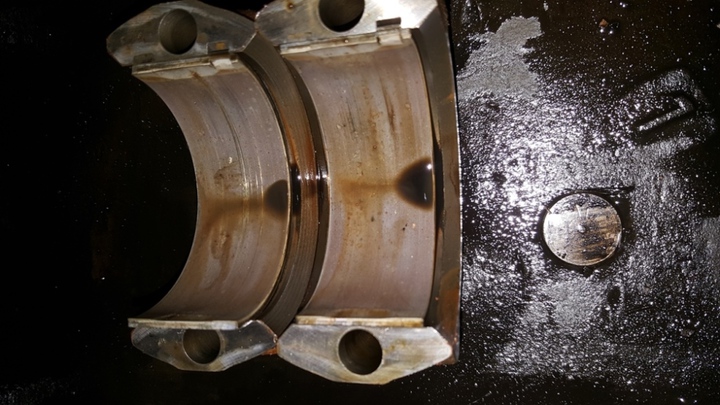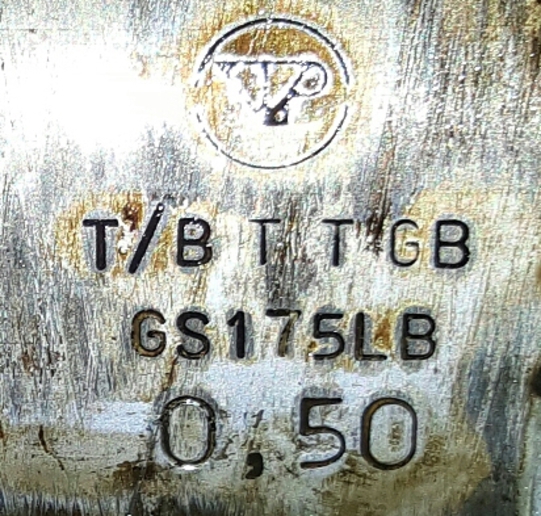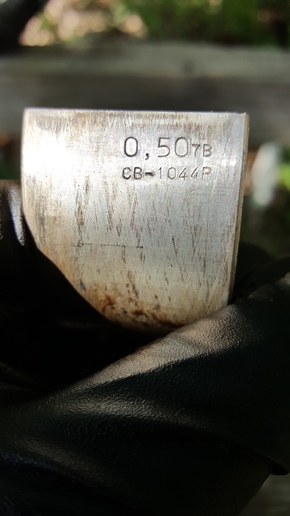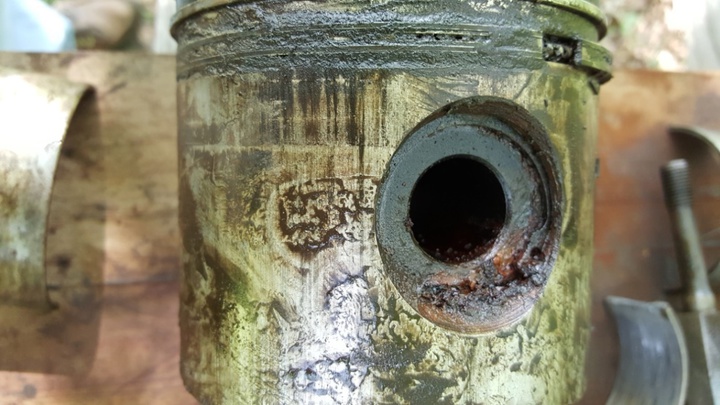I began slowly tearing down (in-place) my '76 674 D239 this summer, after it wouldn't turn over summer 2015, wouldn't even budge with a bar at the pulley. It sat uncovered, and as one might expect has seized due to rust. I was hoping for a little rust on the sleeves, I could free it up, but no, it's everywhere. The head has been removed, and checked. The pistons were stuck in the sleeves, and #4 was pushing the sleeve out with the head off (with a pry-bar at the flywheel). I got the pistons out to replace rings, and possibly hone the sleeves. While that far, I planned to replace all connector bearings. From cylinder 2-4, the amount of inner rod bearing wear increases from the embedded specs I see stuck on the crank. Given the amount of wear on rod bearing 4, and the seized piston bearing... and the fact that I can't turn the engine (out of gear) by hand from the pulley with no pistons, I think I should also replace the mains. This is becoming difficult, considering I've never done a split, and the work must be performed outside on uneven ground.
Should I be able to turn the engine at the pulley by hand without pistons or head installed?
Is there absolutely no way to replace the main bearings and seal without splitting the tractor? Say as one might remove connector rod bearing upper half in a stationary piston and crank position. I really don't like working under or around that much weight if it's got to be split.
I think I've found the rod bearing size after a lot of digging, but not exactly what I read from the manual as .01, .02, or .03, which I assume are clearances. I was told the size would be stamped on the bearing. The rod bearings are from two different manufacturers Clevite77 CB-1044P 0,50 7B, and some other manufacturer I can't determine T/B GS175LB 0,50. I assume these are not standard, as they are not stamped STD, and I assume also that they are +50mm (~+.02") over (finally found some reference today), whereas I've been hunting specs in inches. My tractor is the European model, so maybe that's why, but I've been trying to figure this out for a few weeks now.
This motor has been rebuilt once by the previous owner who is now deceased. I noticed the rod and caps have numbers stamped into them, opposite from the cylinder number. Two are legible, two not so much. Am I correct in assuming those numbers are the size of the bearing for that particular rod/crank journal combination? One of the rod's (#4) stamps has some more recent markings over the numbers, which do not make sense, but it also has the most wear. I suppose I could measure for tolerance, and buy the appropriate sizes. I'm just curious.
Any information would be appreciated. I have all of the manuals for the tractor, mechanic experience, and tools, minus any splitting stands.
Thanks in advance,
M
Should I be able to turn the engine at the pulley by hand without pistons or head installed?
Is there absolutely no way to replace the main bearings and seal without splitting the tractor? Say as one might remove connector rod bearing upper half in a stationary piston and crank position. I really don't like working under or around that much weight if it's got to be split.
I think I've found the rod bearing size after a lot of digging, but not exactly what I read from the manual as .01, .02, or .03, which I assume are clearances. I was told the size would be stamped on the bearing. The rod bearings are from two different manufacturers Clevite77 CB-1044P 0,50 7B, and some other manufacturer I can't determine T/B GS175LB 0,50. I assume these are not standard, as they are not stamped STD, and I assume also that they are +50mm (~+.02") over (finally found some reference today), whereas I've been hunting specs in inches. My tractor is the European model, so maybe that's why, but I've been trying to figure this out for a few weeks now.
This motor has been rebuilt once by the previous owner who is now deceased. I noticed the rod and caps have numbers stamped into them, opposite from the cylinder number. Two are legible, two not so much. Am I correct in assuming those numbers are the size of the bearing for that particular rod/crank journal combination? One of the rod's (#4) stamps has some more recent markings over the numbers, which do not make sense, but it also has the most wear. I suppose I could measure for tolerance, and buy the appropriate sizes. I'm just curious.
Any information would be appreciated. I have all of the manuals for the tractor, mechanic experience, and tools, minus any splitting stands.
Thanks in advance,
M


